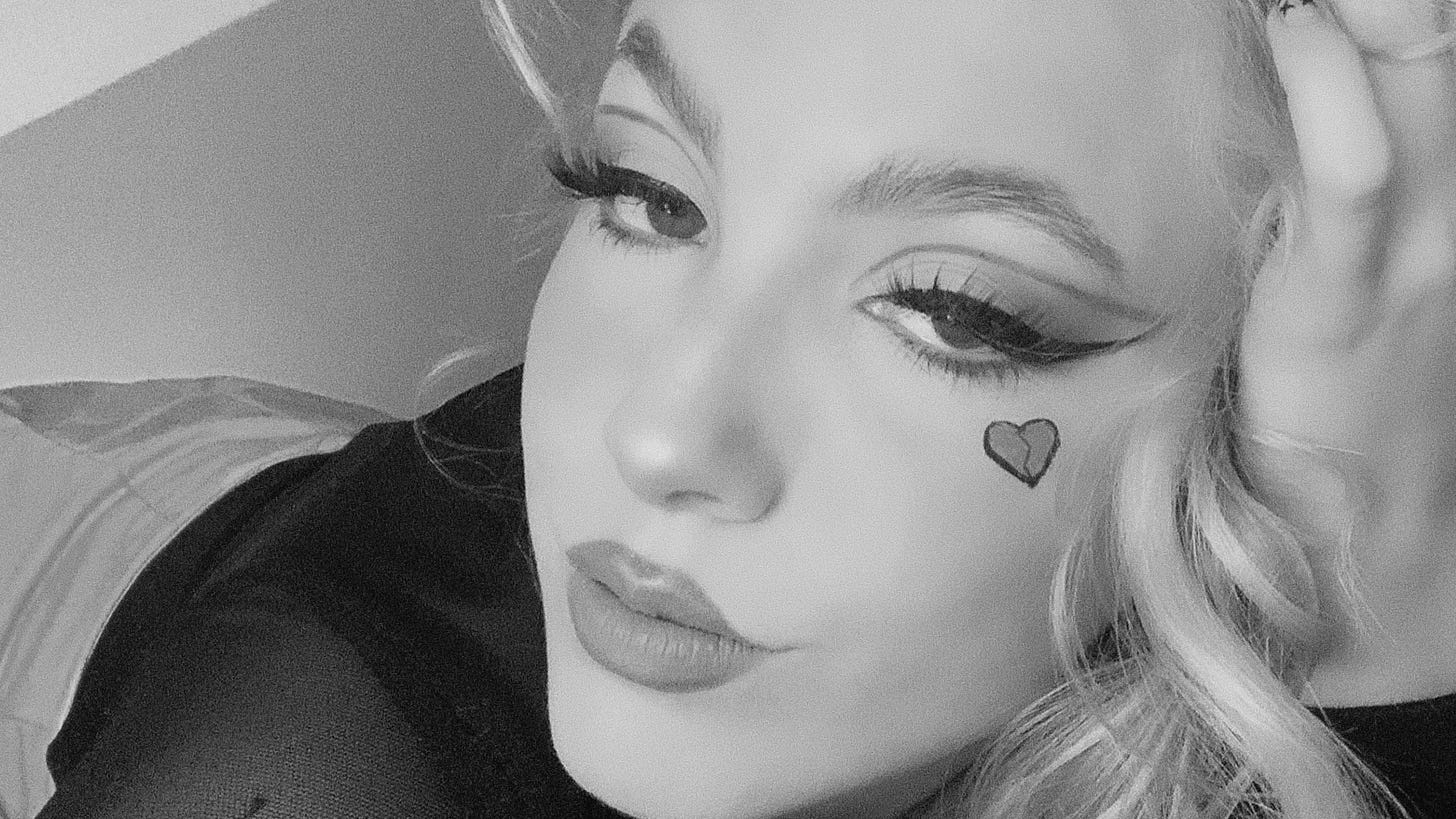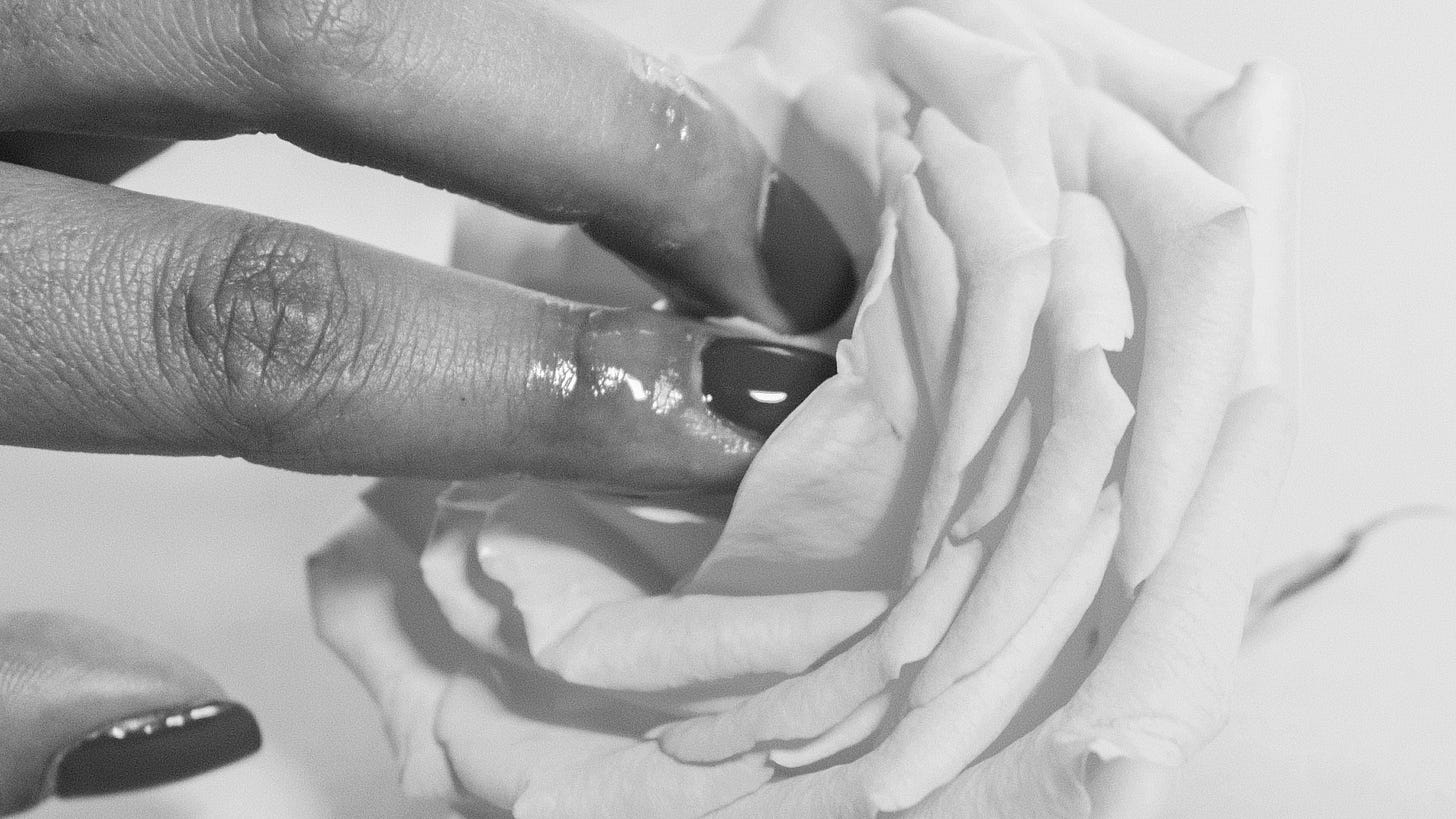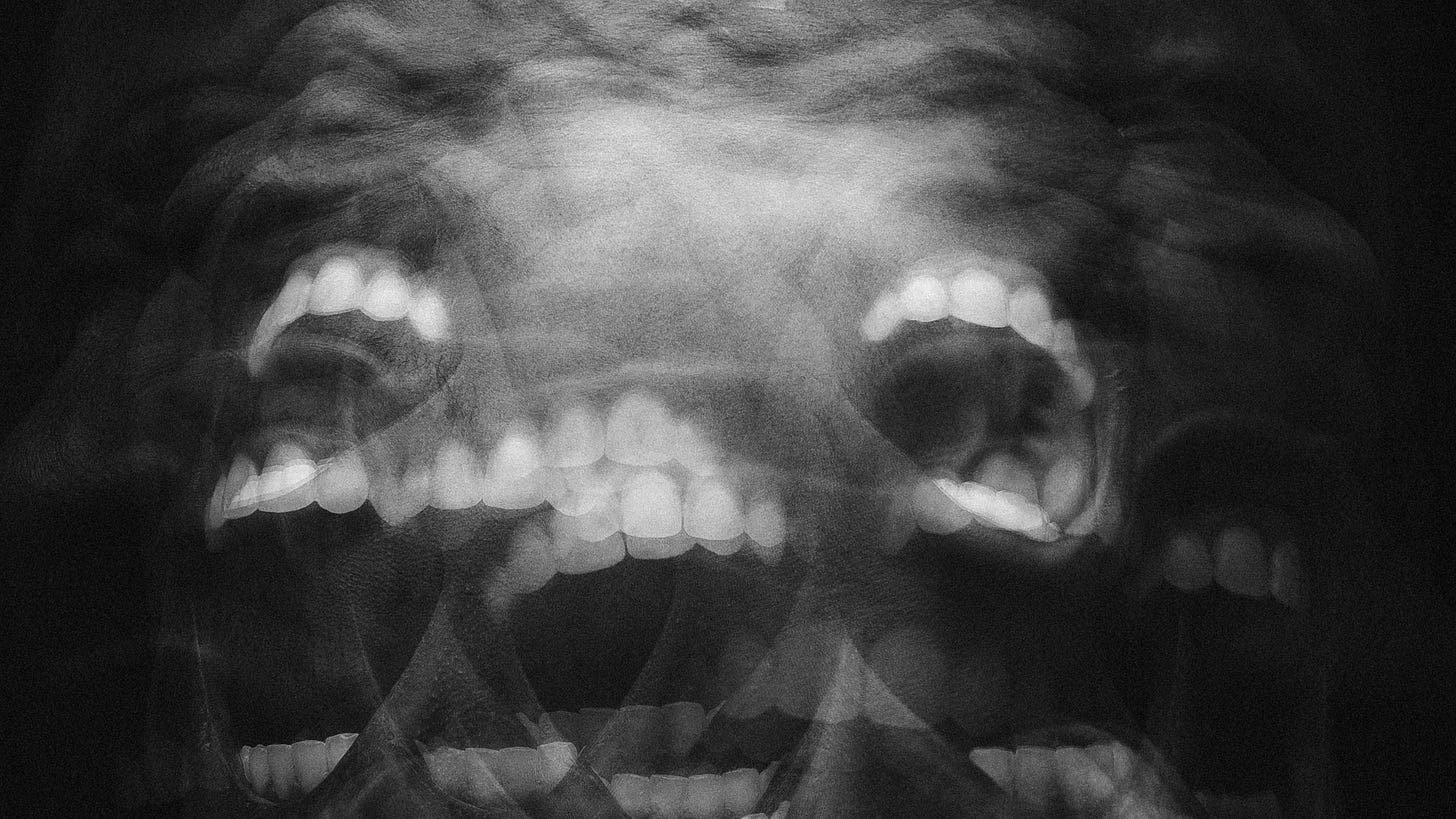3_TRENDS_Vol.22: Sarah Rabia: Bimbos, Midlife Revolution + New Age Rage
Vol.22
3_TRENDS is an interview series with the world's leading cultural researchers and thinkers, sharing their favorite overlooked trends.
Sarah Rabia (SR) is a global Cultural Strategist and Content Marketer. With 20+ years experience in content creation, insight and disruptive brand strategy, she specializes in tech, fashion and beauty. She is the Co-Founder of Backslash, TBWA\’s content studio, and Business Insider’s Top 10 Most Creative Women in Advertising.
MK: Sarah, what’s on your mind?
Bimbos
SR: Since the 1920s, “Bimbo” has been a derogatory term for demeaning the intelligence of — and respect for sexually attractive women. More recently, it’s even been used as a gross substitute for mental health problems (see: Britney, Lindsay and RIP Amy.)
But now, Gen Z TikTokers are reclaiming the misogynistic stereotype and reinventing it via DE&I, Y2K nostalgia, and drag culture.
Bimboism embraces duality (v Gen Z): I can be wearing fluffy pink and watching “airheaded shit” (“No thoughts. Head empty. Just vibes”) while dismantling the patriarchy and reclaiming a misogynistic stereotype which once meant: sexy equals dumb.
Today’s Bimbo represents a new inclusive and transgressive, hyper-feminine ideal.
Anyone can be a bimbo.
There are male bimbos (himbos), non-binary bimbos (thembo or nimbo), disabled bimbos, goth bimbos, and drag bimbos. The intersection between Bimboism and drag culture is quite interesting. Bimbo creators similarly lean into the performance of misogynistic expectations satirically — and have fun doing so.
BimboTok queen Chrissy Chlapecka (seen above) defines a Bimbo as,
“A radical leftist who is pro-sex work, pro-Black Lives Matter, pro-LGBTQ+, pro-choice, and will always be there for her girls, gays, and theys.”
She calls on “girls, gays, and theys” not only to embrace the term bimbo, but to redefine it completely. And as we know: where there’s new language... there’s new culture.
Bimbo-ism is not without its critics. Many have voiced concerns that it feeds into the male gaze, promotes Eurocentric beauty ideals, and encourages girls to downplay their intelligence
Syrena, also known as @fauxrich, a Mexican-American “intelligent Bimbo” says,
“We [women] don’t have to ‘be’ anything to be taken seriously, as women should be taken seriously in all spaces regardless of how they look.”
”[Bimbofication] is not a protest against intelligence, it’s kind of a protest against academia and how elitist and classist it is.”
The timing of Bimbo-ism is telling. It arrives during the rise of DE&I and gender fluidity, and the fall of traditional bimbo-ism such as Victoria's Secret and Gossip Girl 2.0. It’s also best personified by the reappraisal and reinvention of so-called bimbos — from our collective guilt around Britney, Pamela Anderson and Monica Lewinsky, to the feminist rebrands of Emily Ratajkowski, Megan Fox, and “stripper hoe and feminist icon” Cardi B. Barbiecore Pink is literally the color of the year.
So why now, though? Women’s rights are regressing. From the overturn of Roe vs. Wade and the Iran protests, to the death of London teacher Sabina Nessa. We need to fight back.
The Bimbo is an unapologetically feminine, joyful and defiant symbol of this. It’s a Post-Girlboss era of feminist joy.
MK: In his first 3_TRENDS volume a year ago, Dylan Viner identified “Cultural Correctives” as a noteworthy emergence.
“I've been fascinated by how much meaningful cultural revisionism is going on, looking back and reassessing, or correcting, an existing cultural narrative in order to move forwards.”
An unintentional consequence of our rapid regurgitation of the past via obsessive nostalgia, is our forced reckoning with hurtful artifacts, symbols and styles of the time.
But bringing the past into the present doesn’t just have to be played out Stranger Things tropes or more Star Wars installments.
Revisiting the past can be a progressive positive: like music critics re-evaluating albums they thought they got wrong.
Call it Cultural Correctives or “Iterative Nostalgia”: not stopping at just resurfacing memories, but building upon them and acknowledging new contexts. The result is something as reassuring as provocative.
This is clearly the case with bimbos: a re-investigation of a trope, refreshed and modernized to now appropriately fit the moment.
Historically, the label was placed onto the individuals by the masses, but today, the label is self-owned — it’s taken back. Bimbo’s are controlling the narrative.
This feels healthy... but... for as long as we’re simultaneously recognizing how we got it wrong in the first place — learning from those oversights, and not just now capitalizing on our negligence.
That nuance makes all the difference.
Midlife Revolution
SR: I’ve been obsessed with menopause for a couple of years now. And am currently developing a project with a fresh take on it through the lens of Gen X (a neglected audience and co-opted culture) who are now revolutionizing the “midlife” stage.
(If you don’t know, menopause is when your periods stop.)
With periods in general becoming less stigmatized, this biological change – plus more culturally, becoming a midlife woman – triggers a whole host of physical, mental, social, sexual, good, bad, and incredible life changes.
Every woman and many LGBTQ+ people will go through menopause. Yet business and society ignore and shame it. Meanwhile, government and healthcare lack the policy and training for it.
By 2025 there will be over 1B menopausal people. That’s more than 12% of the population. It’s massive yet widely unsupported.
It fascinates me that a whole menopausal audience — and transformational life stage — remains so neglected... Even by women and LGBTQ+ communities themselves.
We don’t understand it, share it, nor guide our kids and mates through it. We’re taught to be ashamed of it. It makes me angry — however, finally, culture is seemingly changing.
Why now? We’re in the midst of policy change, led by the UK, where Members of Parliament recently called for menopause health checks at 45 and free HRT (Hormone Replacement Therapy). Meanwhile in Hollywood, midlife women are finally entering the limelight and toppling taboos: from celebs like Paltrow, Barrymore and Diaz investing in telemedicine for HRT, to stars and shows themselves. Then there’s the CEO Menopause Summit. Neglected for so long, this “flyover generation” is finally having its moment, building momentum of acceptance.
Menopause is just one slice of the story today, and midlife can be the best time in a woman’s life.
MK: There’s an irony to overlooked audiences:
Doing good, is good business.
The business of menopause is projected to be a $600B market by 2025.
But equity has its potential downsides.
When Lucky Strike cigarettes recognized that they were missing out on half a market — women — due to the stigma around women smoking at the time, they consulted Bernays, the father of modern public relations. He devised the “Torches of Freedom” campaign.
Sure enough, it worked, and women became hooked too.
Increased consumer recognition is forever required — for as long as this focus is free of manipulation, exploitation and pandering.
As Casey Lewis identified Old-Phobia in her 3_TRENDS volume:
“Kim Kardashian said she’d quite literally ‘eat shit’ if it means looking younger. Why again are we so scared of getting older?”
And to connect this to Sarah Unger’s volume surfacing Memento Mori:
“By accepting the inevitability of mortality, society is able to refocus and contemplate humanity in a whole new light.”
...Aging and death remain largely stigmatized. Menopause is just another shameful milestone in our journey.
But debugging the contempt surrounding a simple fact of life is invaluable.
Unfortunately, it just may take a TAM (total addressable market) dollar amount to topple this taboo.
If that’s what it takes...
New Age Rage
SR: Music festival-goers burned down tents and chanted, “Let’s go fucking mental” in the (multiple) Woodstock ’99 docu-series, and then more recently at Reading this past year.
British NHS nurses voted to strike in first ever national action as cost of living bites. “Rage quitting” is all the rage. And American midterm voters were angry about... well, everything.
There’s Disney+’s She-Hulk, Yellowjackets and Bad Sisters — “the brutal new icons of female rage,” and an Iranian protest song which became the soundtrack to civil uprising.
The permacrisis, polarization and inequality are obviously fueling this. As we know, anger motivates voter turnout and online traffic. And such, there are political and commercial incentives.
But we automatically see anger as a problem.
While anger is normal and healthy, it in fact can be a positive and useful human emotion.
Anger isn’t bad, it’s about how we control it.
We appear to be in a peculiar moment of rage. What’s driving it? Anger has been brewing and manifesting for some time, from BLM to “Eat the Rich.” But I see it reaching new heights due to looming financial uncertainty. When financial stasis is threatened, gasoline is poured on...
MK: When “Therapeutic Screaming” makes headlines (again) — despite it existing since the 70s — something has to be up.
As businesses and professional thinkers, it’s worthy to consider: how do we channel and release this social sentiment for good?
Anger is just radical passion. But anger plus productivity creates movements.
There’s a lot to be angry about today.
But there’s also a lot can we can do.
The opportunity here is to move from a culture of MMA-style anger to that of Judo — turning an opponent’s force to one’s own advantage rather than opposing it directly.
How do we direct, funnel, channel, fulcrum and pivot this rage towards something worthwhile... and in our control?





